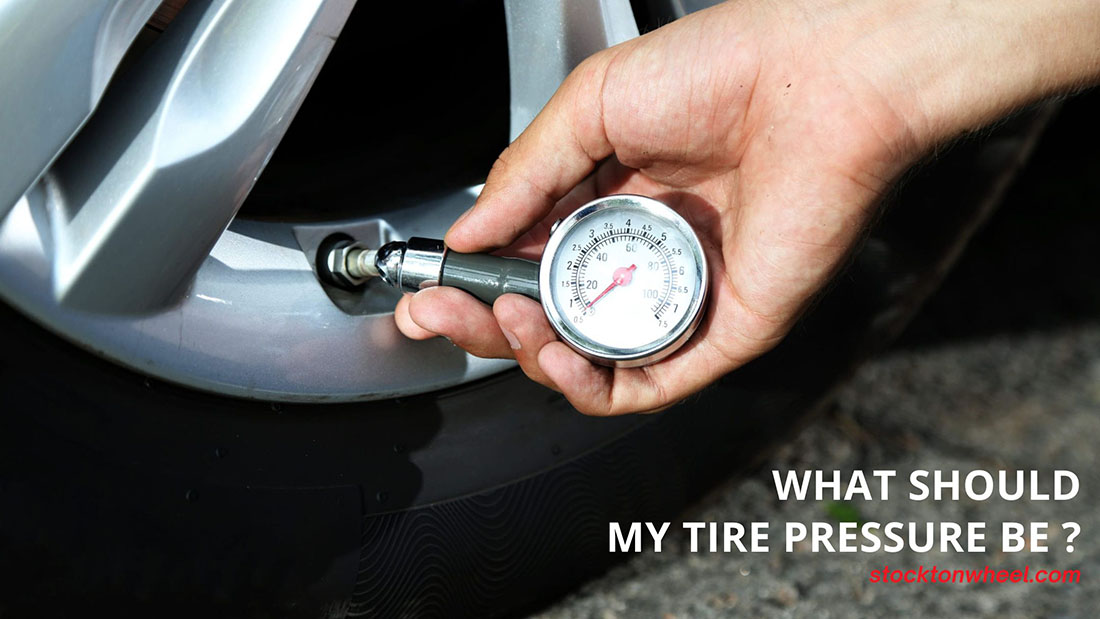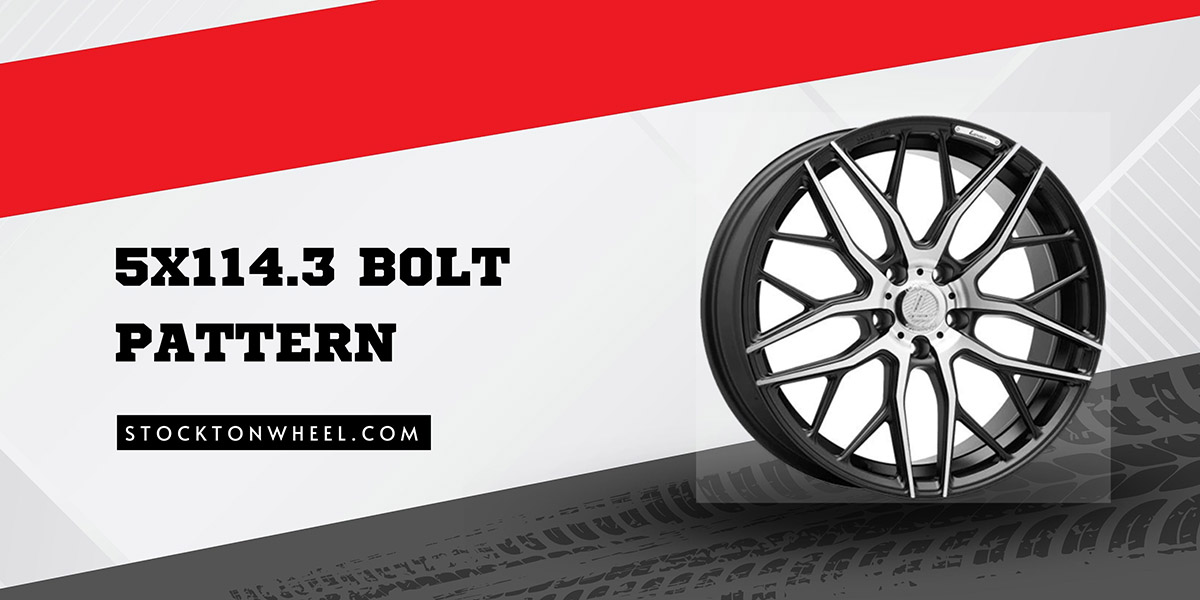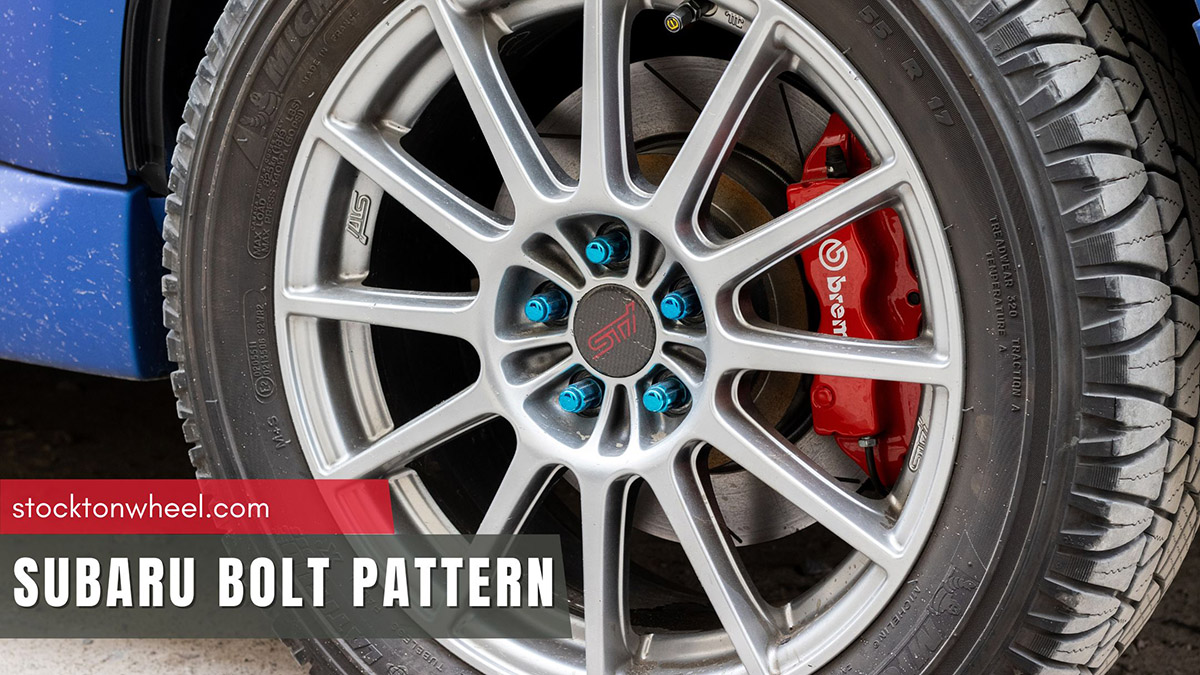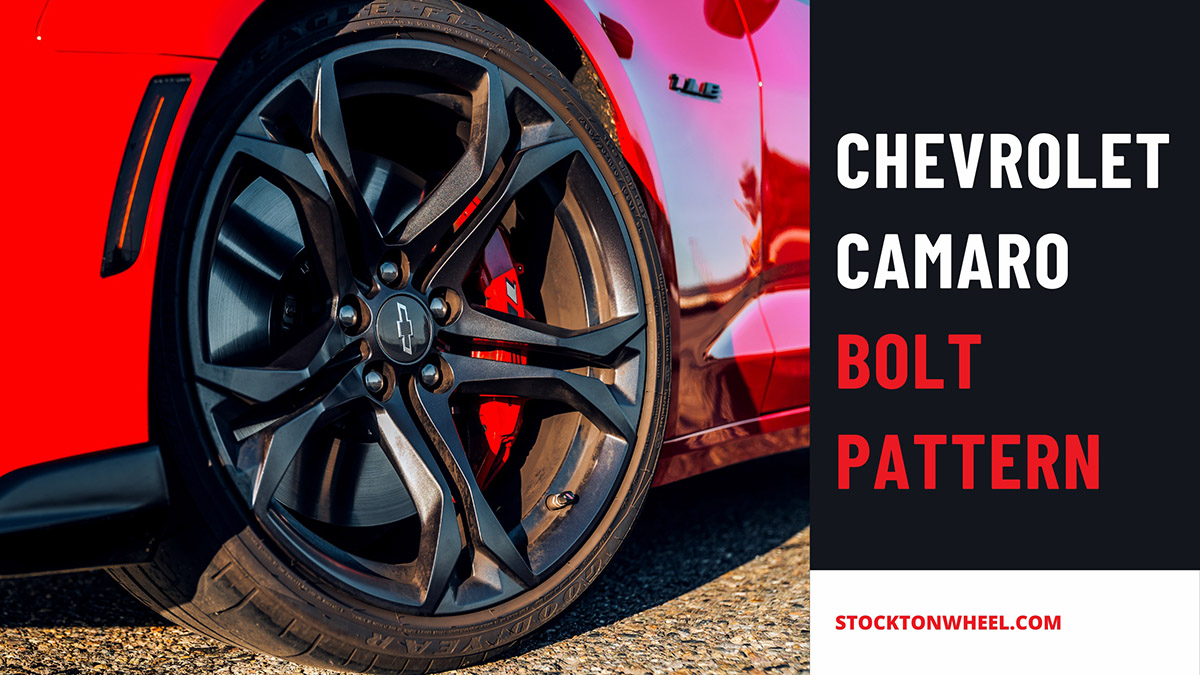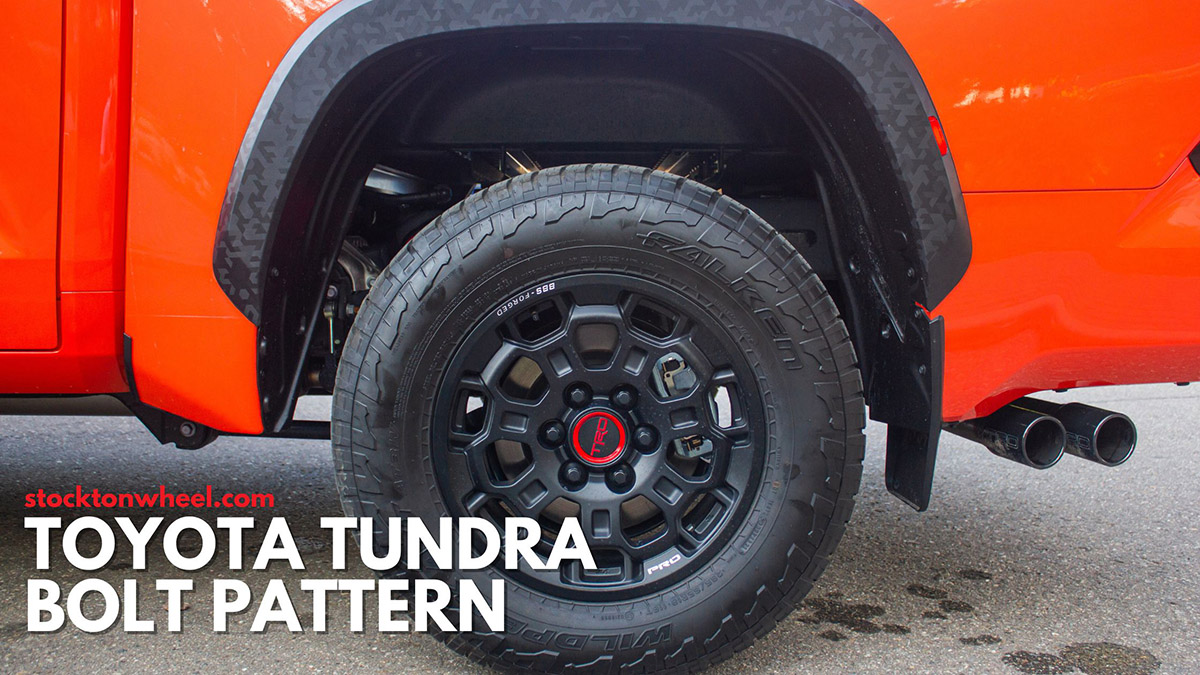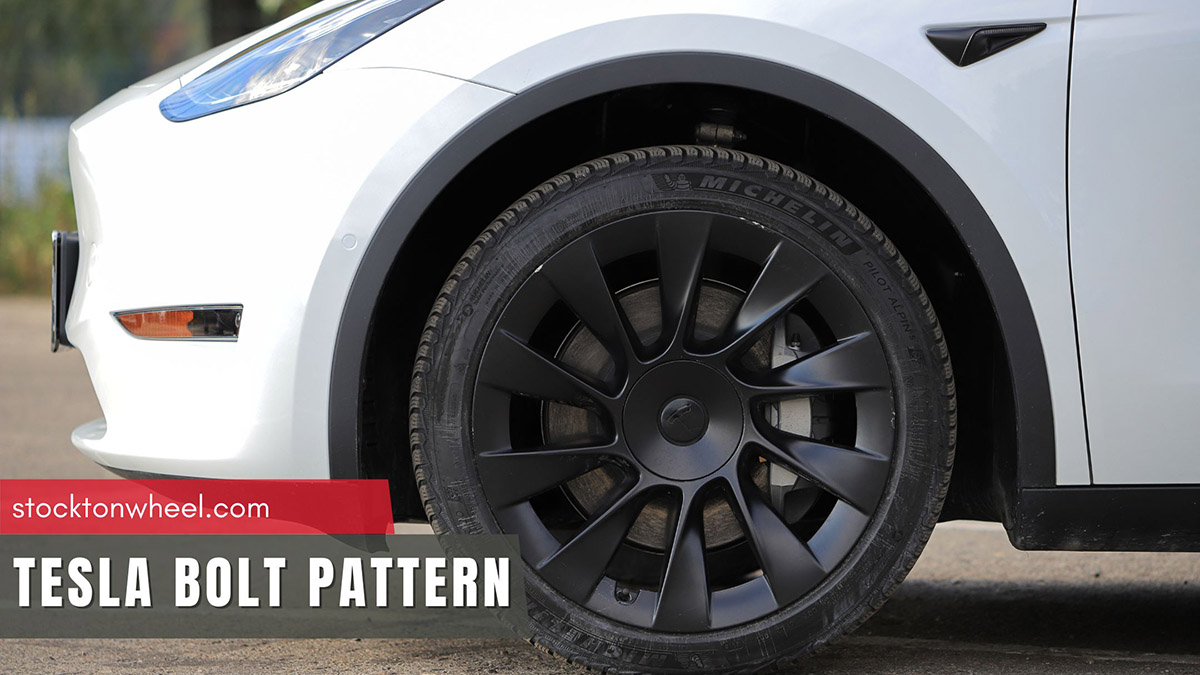Maintaining proper tire pressure is a fundamental aspect of vehicle safety and performance. Unfortunately, many drivers overlook the importance of this task or remain unaware of its impact on the overall handling, fuel efficiency, and overall safety of their vehicle.
If you’ve ever wondered what PSI should your tires be, this guide is here to provide you with the essential knowledge to make informed decisions when it comes to tire inflation.
In this article:
What Is A Good Tire Pressure For My Vehicle?
The average tire pressure for passenger cars ranges from 30-35 PSI, while it’s 38-42 PSI for SUVs. However, the exact PSI for your vehicle varies depending on several factors, including the tire make & model, tire size, your intended use, driving conditions, etc.
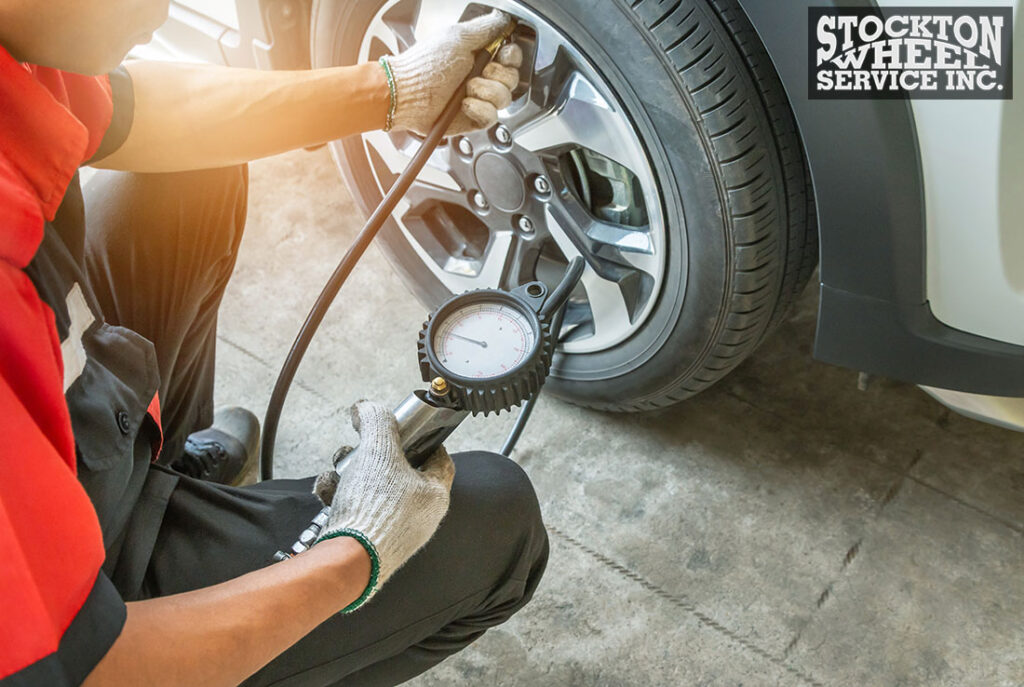
For instance, small-sized cars typically require 30 PSI, medium vehicles ask for 36 PSI, while tires set for larger models are at least 42 pounds per square inch.
For Some Notable Car Models
It is important to note that tire pressure recommendations vary between vehicle manufacturers and other models within the same brand. A few producers also announced that their models’ front and rear tires require different indexes. Below are tire pressure variations for some famous brands and their popular cars.
| Tire Brand | Model | Average Tire PSI |
| Ford | F-Series | 35 |
| Focus | 33-34 | |
| F-150 | 35 | |
| Toyota | Tacoma | 32 |
| RAV4 | 33 | |
| Corolla | 36 | |
| Chevrolet | Silverado | 35 |
| Equinox | 35 | |
| Nissan | Altima | 32 |
| Ram | 1500 | 35 |
| Honda | Civic | 32 |
| CR-V | 35 | |
| Mazda | 3 | 31-32 |
| Hyundai | Elantra | 32-33 |
| Volkswagen | Jetta | 32-33 |
| Kia | Forte | 31-32 |
| Subaru | Impreza | 31-32 |
For Vehicle Types
As mentioned above, pressure also varies with the size and type of vehicle. A general rule of thumb is the larger the vehicle, the greater the air pressure.
| Type of vehicle | Recommended PSI |
| Passenger car | 30-35 |
| SUVs | 40-42 |
| Small trucks | 50-60 |
| Large trucks | 116-131 |
For Different Terrains
Few people know that tire pressure can be adjusted according to road conditions. For example, we often air down our tires (sometimes even 50% of the PSI) before entering sandy or gravel roads. This allows the tires to flex and conform to uneven surfaces, providing improved traction and a smoother ride..
| Driving conditions | Recommended Pressure Range |
| On-road/Highways | 30-38 |
| Rough gravel roads | 26-32 |
| Rocky routes | 22-28 |
| Mud roads | 22-28 |
| Sandy routes | 16-18 |
Where To Find The Manufacturer’s PSI Rating For Your Vehicle?
The good news is that you can find air pressure in many places, including your owner’s manual, inside your car, or on the sidewall of your tire. However, each location may provide different figures. Hence, you need to understand their insight to ensure proper tire inflation.
Inside Your Car
In addition to the manual instructions, tire manufacturers indicate the optimal pressure range in each vehicle. Focus on the driver’s door first and look for a small sticker with important specifications. This small piece may also appear on the trunk lid, glove box, gas door, or console.
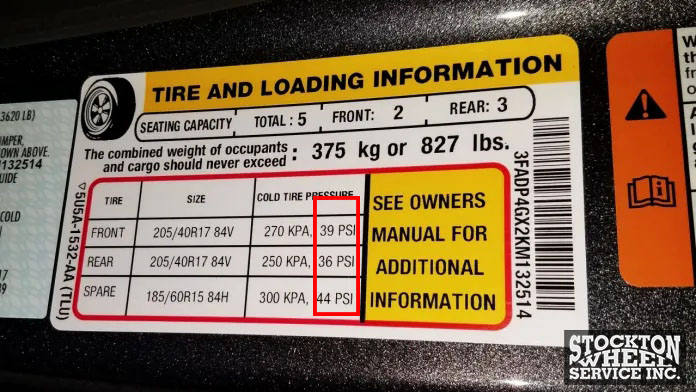
Note:
- Inspect your front and rear tires, as the PSI might be different (the rear ones are often higher than the front).
- Do not forget to check the pressure of the spare tires to ensure they are consistent with the rest.
On The Sidewall
You may sometimes come across a PSI rating on the sidewall of your tire, but do not trust it immediately. Instead of showing the ideal pressure range, these numbers show the maximum cold pressure under conditions where your vehicle operates at full load.
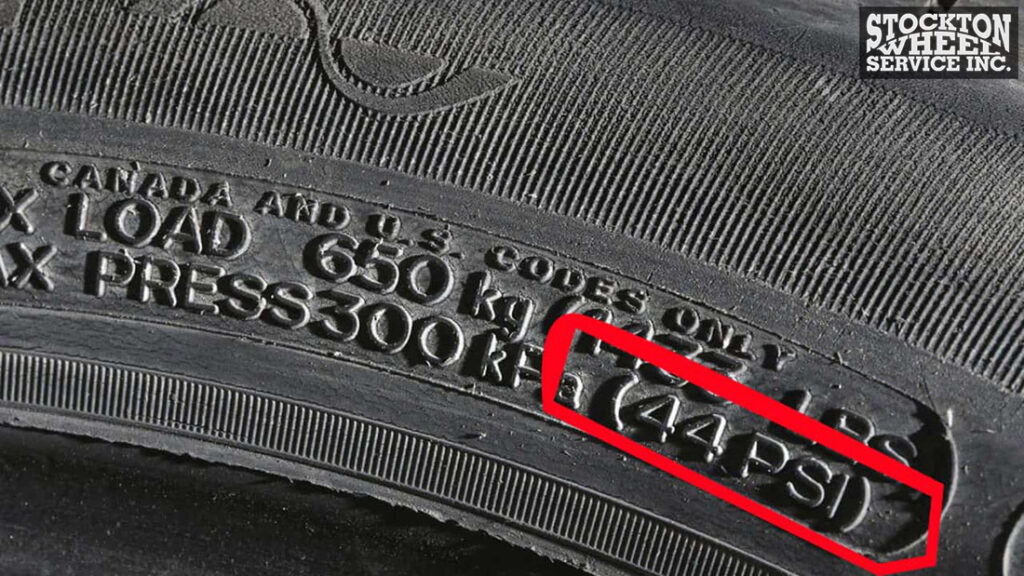
It is easy to notice since some models come with the words “Max” in the string while some do not. Regardless of the sequence, it would help if you remembered that the meaning of the pressure level found in the tire sidewall is constant.
Why Should You Not Inflate The Tire To The Maximum PSI?
As mentioned above, you should not follow the numbers found on the tire sidewall – the allowed maximum pressure. Never risk doing these things because they only lead to bad results. Some possible scenarios include:
Poor handling capabilities
On the bright side, the max pressure level promises better cornering because the inflation reduces the contact area of the sidewall with the road surface. However, there are dangers in that the back of the tire may slide out of the expected direction.
Shortened lifespan
Overinflation causes the center of the tread to wear faster than the edges. This uneven wear pattern reduces the overall longevity of your items and ends up with premature replacement.
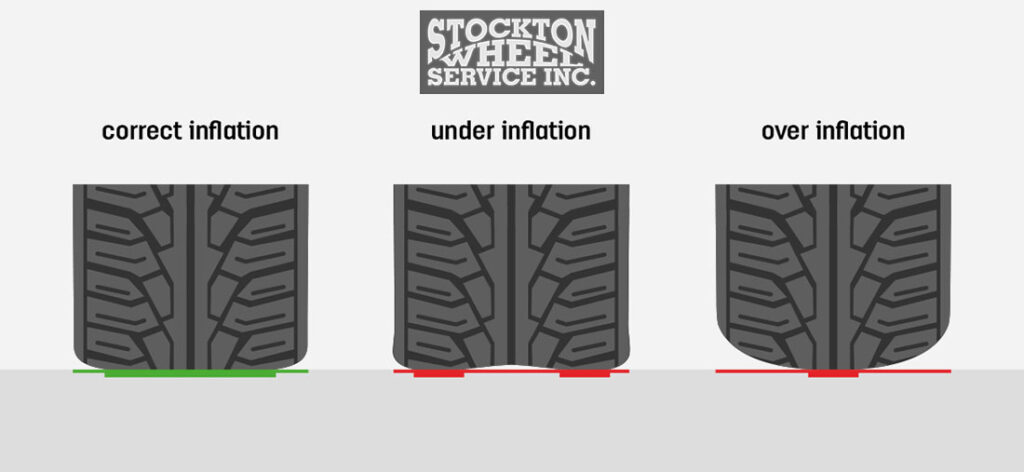
Uncomfortable ride
Maximum tire pressure can make the ride harsher and bumpier. The tires become stiffer, transmitting more road imperfections and vibrations to occupants.
See more: What Tire Pressure Is Too Low?
Increased susceptibility to tire damage
Over-inflated tires are more prone to damage from road hazards such as potholes or sharp objects. The excessive pressure makes them less able to absorb impacts, increasing the risk of punctures or sidewall damage.
How To Maintain Proper Pressure
Learning the ideal tire pressure for your vehicle is not enough; you must also check your tires regularly to maintain pressures within this range. Most tire professionals recommend doing this task monthly or whenever the tire pressure monitoring system (TPMS) signals.
Also, shorten the interval between two pressure checks when the temperature tends to decrease. Cold weather conditions cause the pressure inside the tire to drop more quickly. For example, in December in Chicago, when the ambient temperature dropped below 38°F, we recorded our tires losing 1-2 PSI overnight.
FAQs
Should All 4 Tires Have The Same PSI?
It is advisable to inflate all four regular tires to the same PSI level. This ensures that each tire contributes equally to the vehicle’s overall performance.
How Does Tire Pressure Affect Driving?
Tire pressure plays a significant role in driving performance. Proper PSI maximizes traction and grip, maintains the intended handling characteristics, and optimizes fuel economy.
Conclusion
Comprehensive consideration of the factors that affect air pressure is the best way to determine the normal PSI for tires. Regularly check your tire pressure using a reliable gauge and adjust it as needed. Maintaining the correct tire pressure ensures your safety on the road and enhances your driving performance and vehicle longevity.
View more: Low Tire Pressure Cold Weather

